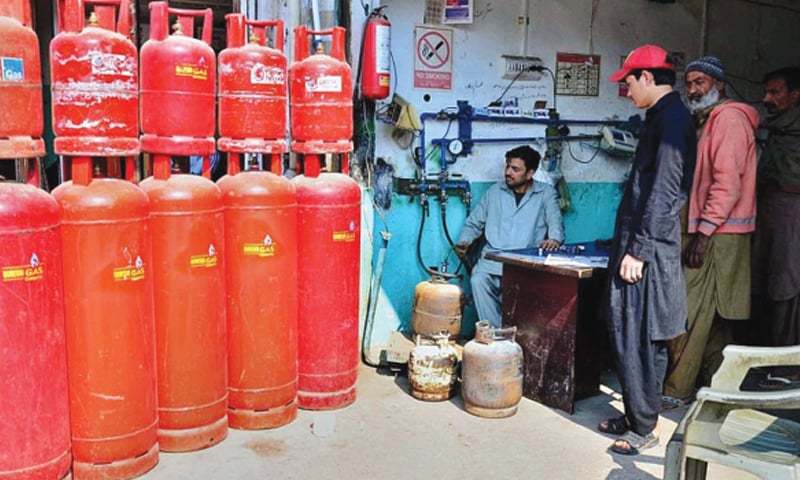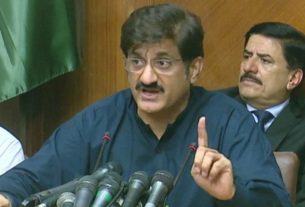ISLAMABAD: The Oil and Gas Regulatory Authority (Ogra) on Friday notified a seven per cent increase in the price of liquefied petroleum gas (LPG) and allowed about 22pc rise in the prescribed rate of natural gas.
In separate determinations under revised revenue requirements for the current year, Ogra has allowed an increase of Rs119.68 per unit to Sui Northern Gas Pipelines Ltd’s (SNGPL) prescribed price and Rs69.1 per unit to Sui Southern Gas Company Ltd (SSGCL) to meet their revenue requirements for 2018-19 by setting the average prescribed price at Rs631 per mmBtu.
According to the officials, about Rs111 per unit increase in prescribed prices was necessitated by unmet revenue requirement during the current year because of a lopsided tariff rise allowed in October last year and remaining Rs9 per unit because of increase in cost of gas.
Increase to take effect after govt approval
Under that structure, the government did not jack up gas rates for 90pc of consumers in nine months of the year and parked the entire increase in three winter months that raised a public outcry. On top of that, the tariff for zero-rated sectors was significantly reduced and maintained for special roti tandoors. As a consequence, the revenue requirement of gas companies fell short of approved targets and hence the need for fresh increase of about Rs120 per mmBtu.
The government had already allowed recovery of an additional Rs95bn from consumers in October that jacked up domestic consumer prices by up to 143pc.
This decision would allow an additional revenue of about Rs75bn to two gas utilities – Rs50bn to SNGPL and Rs25bn to SSGCL.
Under the law, the government is required to notify consumer prices on the basis of prescribed prices approved by Ogra or advise how the approved rise should be spread among various consumer categories.
The lower prescribed price of SSGC will not benefit consumers in Sindh and Balochistan because of a government formula currently in vogue that maintains a uniform natural gas tariff across the country. This policy requires the implementation of a higher-than-average prescribed price of either gas utility.
The higher tariff collected from consumers to ensure uniformity then results into gas development surcharge that goes to the provinces on the basis of their share in gas production.
The regulator noted that about $2 billion worth of gas was stolen per annum across the country, making a major contribution to more than 11pc unaccounted for gas losses. Ogra said it had held in its Final Revenue Requirement (FRR) for 2017-18 that if gas prices were not increased for 2018-19, total revenue shortfall as on June 30 would be approximately Rs164bn. Recovery of this amount in the remaining period till June 30 may require manifold increase in gas prices by the government.
Ogra expressed its displeasure over incorrect application of pressure factor in gas bills applied by the SNGPL. It asked the company to pass on reversal/adjustment to the affected domestic consumers due to application of pressure factor above eight inches of water column across the board for the period July 2018 to February this year.
The company was also directed to strictly follow this standard and stop application of pressure factor above eight inches of water column in domestic consumer gas bills in the future.
“In case of non-compliance, the volume booked by SNGPL by the application of said pressure factor, which is not in compliance with the consumer contract shall be reversed in the final revenue requirement,” the regulator said.
LPG price: Separately, Ogra also increased the price of indigenous LPG by Rs9 per kg or Rs95 per 11.8kg for March. According to a notification, the new price of 11.8kg domestic cylinder would be Rs1,523, up from Rs1,427.67 last month, showing an increase of 6.69pc.
It’s the third consecutive increase in LPG rates during 2019, as announced by Ogra and is mainly attributed to the surge in international prices.
The producers’ price for an 11.8kg domestic cylinder, including excise duty of Rs85 per metric tonne, worked out at Rs833.32. With an addition of Rs413 per cylinder marketing and distribution margin, consumer price worked out at Rs1,301 per cylinder and ended up at Rs1,522 after the 17pc general sales tax.



